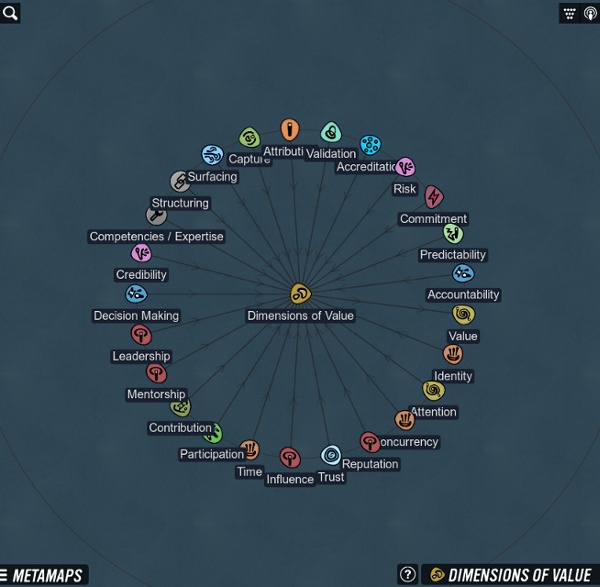



APML - Attention Profiling Mark-up Language: The open standard for Attention Metadata World Community Grid - Accueil How unique are your usernames? Usernames are ubiquitous on the Internet. Almost every web site uses them to identify its users and, by design, they are unique within each service. In web services that have millions or hundreds of millions of users, it might become difficult to find a username that has not already been taken. For instance, you might have experienced that a specific username you wanted was already taken. This phenomenon drives users to choose increasingly complex and unique usernames. Our experiments show that most usernames constitute extremely identifying pieces of information. Type your username (for example “zorro1982″ or “dan.perito”) to discover how unique it is. Alternatively, try typing two usernames separated by a space. Paper How unique and traceable are usernames?
Atom This page describes the Atom class. For design information, see also OpenCogPrime:Atom. The type of an atom cannot be changed after the atom has been inserted into the AtomSpace: OpenCog atoms are immutable. Scheme interface Atoms can be created, manipulated and destroyed at the scheme shell command prompt. C++ Programming Interface Atom is the superclass for Node and Link. One of the main challenges in implementing the core structures is to have code which allows the representation of knowledge patterns (the graph of nodes and links) in a data structure which was simultaneously very compact (in terms of memory usage), flexible in terms of the kind of allowed queries and time efficient for these queries. getType() returns the type of the Atom. getTruthValue() returns the TruthValue object of the Atom. getIncomingSet() returns the incoming set of the Atom. Methods to freely update Atom properties: setTruthValue() setImportance() setActivation() Class Diagram
Domain Name Generator Attention allocation Attention allocation within OpenCog weights pieces of knowledge relative to one another, based on what has been important to the system in the past and what is currently important. Attention allocation has several purposes: To guide the process of working out what knowledge should be stored in memory, what should be stored locally on disk, and what can be stored distributed on other machines. Status Currently Attention allocation is implemented for keeping track of the importance of atoms. Entities involved Atoms HebbianLinks - indicate which atoms are important at the same time. Overview This sections presents how the flow of attention allocation works. Rewarding "useful" atoms: Atoms are given stimulus by a MindAgent if they've been useful in achieving the MindAgent's goals. Specification for future work MindAgent specific stimulus At the moment, stimulus -> STI/LTI is just done by the ImportanceUpdatingAgent (along with collecting rent and taxation when necessary). I'm thinking:
La e-réputation expliquée par la pyramide de Maslow - La E-réputation par Norolanto RAZAFINIMANANA La pyramide des besoins schématise une théorie élaborée à partir des observations réalisées dans les années 1940 par le psychologue Abraham Maslow sur la motivation. Nous recherchons d'abord, selon Maslow, à satisfaire chaque besoin d'un niveau donné avant de penser aux besoins situés au niveau immédiatement supérieur de la pyramide. A l'origine, Maslow avait une vision dynamique de cette hiérarchie des besoins, cette représentation pyramidale s'est imposée dans le domaine de la psychologie du travail par commodité. Besoins physiologiques / de Survie On nomme besoins physiologiques ceux nécessaires à la survie de la personne, ils sont impérieux (boire, manger, dormir, se réchauffer, ...) et peuvent l'emporter sur la conscience s'ils ne sont pas satisfaits. Besoins de sécurité On nomme besoins de sécurité ceux qui sont liés à l'aspiration de chacun d'entre nous à être assuré du lendemain physiquement comme moralement. Besoins d'appartenance / d'amour Besoins d'estime Besoins de Survie
Agent A MindAgent is a software module that performs computations. MindAgents can be though of as processes or threads; in most cases, they should be implemented as threads. The current MindAgent code in the CogServer combines four distinct functions: The ability to load the code for a MindAgent as a dynamically loadable module (shared library, DSO, DLL). The Scheduler There is a very simple scheduler implemented in the CogServer code base. At this time, Atoms, TruthValues, AttentionValues and the AtomSpace are all thread-safe. Please note that the MindAgent dispatcher code is extremely simple, and is guaranteed to suffer from various textbook ills, such as deadlocks, priority inversion, stalls. Since the scheduler only runs in one thread on one core, it is fundamentally unable to make use of modern multi-core CPU's. Examples Examples of Mind Agents are: Using A list of currently installed agents can be gotten from the CogServer shell; these can also be individually started and stopped. See also
The Conversation Prism by Brian Solis and JESS3